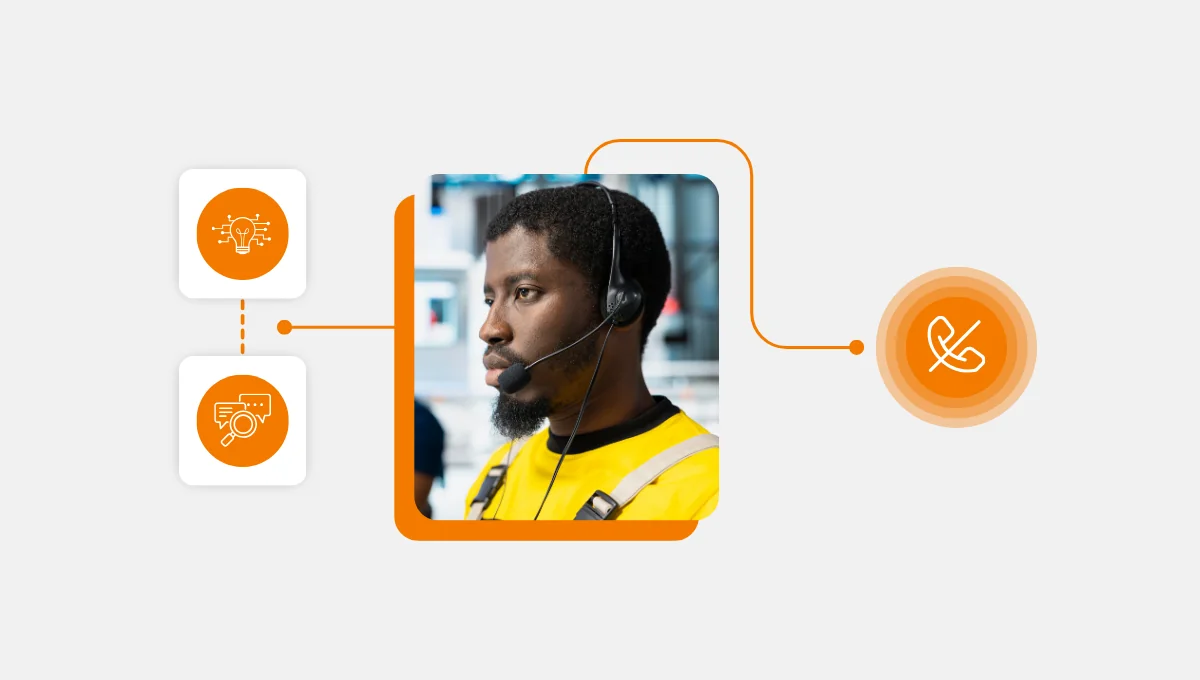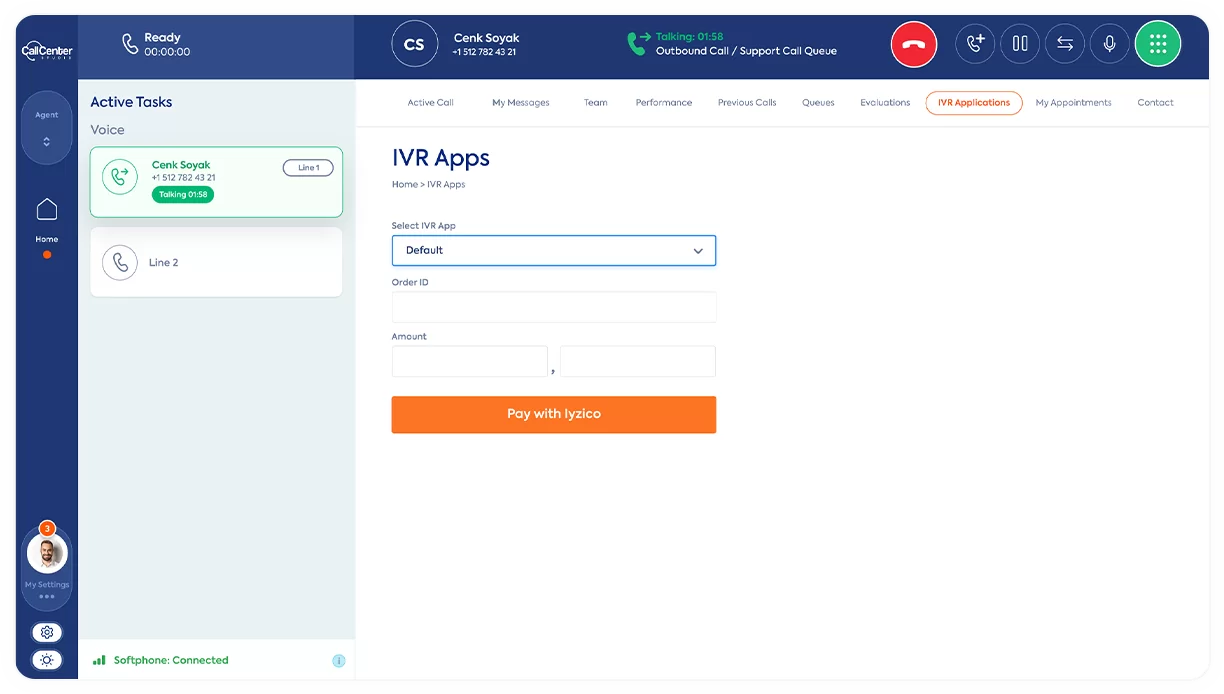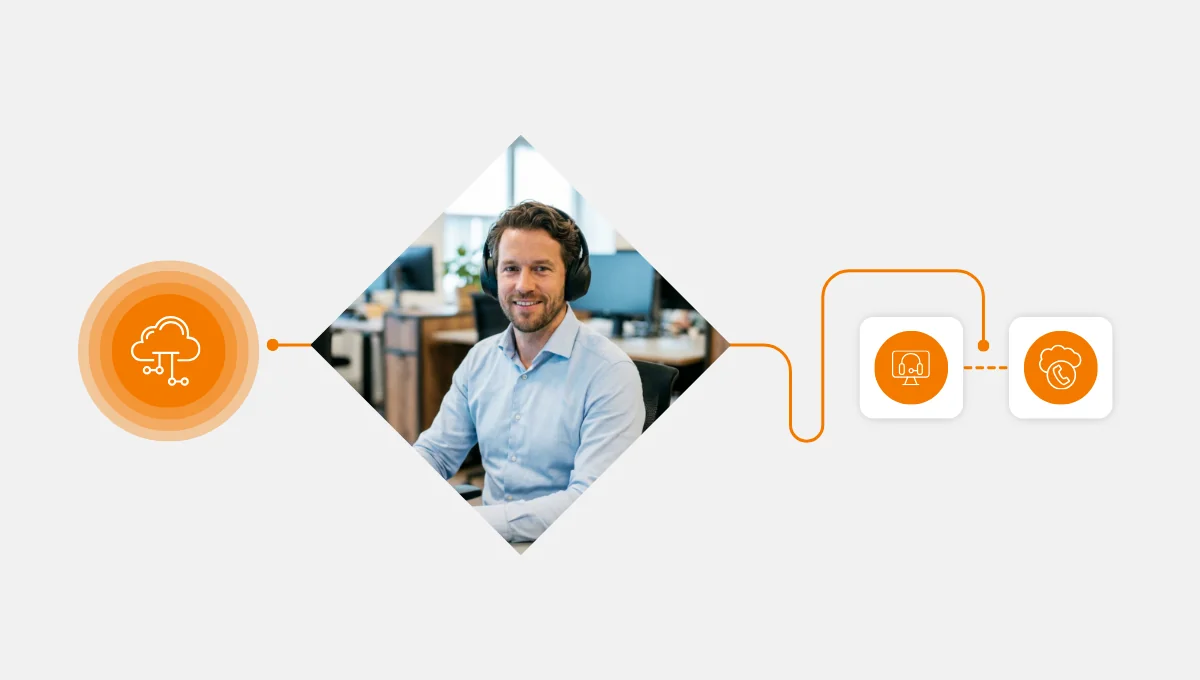Industry benchmarks put the average call abandonment rate between 5% and 8%, but during high-volume seasons, it can spike.
If your contact center were a human body, a higher abandonment rate would be like regularly fainting mid-conversation. Clearly, something’s not functioning as it should.
Let’s examine your CX and run a full diagnostic to determine what’s failing and how to fix it with proven CX improvement strategies.
Why is an Abandoned Call a Symptom, Not the Disease Itself
An abandoned call represents pain. Specifically, the pain your customers feel when they dial into your contact center, only to wait… and wait… and then give up. It is a vital sign that your system is under stress.
When customers hang up, what they do is form an opinion: “This company doesn’t value my time.”
That perception bleeds into brand loyalty, churn, and even word-of-mouth. And like any untreated health issue, if ignored, it spreads.
In short high call abandonment rates:
- Distort customer service metrics,
- Hide workload imbalances, and
- Leave operational gaps unaddressed.
Diagnosing the CX Body: 3 Vital Organs and Their Malfunctions
Let’s look at the three core systems of contact centers and their equivalent in the human body. So you can see how the issue is vital easily
1. The Brain: IVR Logic (Cognitive Dysfunction)
Your IVR (Interactive Voice Response) system is the brain of your call flow. Similar with brain IVRs:
- Directs decisions,
- Prioritizes what inputs/information comes, and
- Directs users to the right function.
However, if you get too many calls at once, a messy IVR causes cognitive overload.
Messy IVRs reason are usually three, which are:
- Endless loops,
- Unclear menus, or
- Poor language recognition
These create a fog in your system because they confuse, frustrate, and eventually cause customers to mentally (and physically) check out. Abandoned call causes often start right here.
Prescription:
- Improve IVR experience by simplifying menus and limiting depth to 2–3 levels.
- Use clear, conversational language.
- Offer self-service intelligently (where it actually works.)
2. The Heart: Queue & Callback System (Weak Pulse)
Your queues and callback options act like the heart: they keep customers “circulating” through your system.
But a system with no estimated wait time or no callback options in the contact center is like a heart with arrhythmia: it can’t maintain rhythm, and eventually, it fails.
Without visibility into how long they’ll wait or the option to disconnect without losing their place, customers bail. And they bail fast.
Prescription:
- Display estimated wait times or position in the queue.
- Offer scheduled or real-time callback options.
- Communicate delays clearly to reduce perceived wait time.
3. The Lungs: Staffing & Forecasting (Oxygen Deprivation)
Your workforce is your oxygen. Understaffed centers are like lungs struggling to breathe.
During high-demand spikes, if your WFM (Workforce Management) tools can’t forecast load or scale coverage, your agents burn out and your customers suffocate in wait.This bottleneck directly hurts contact center efficiency.
Prescription:
- Use call center analytics and real-time data to monitor traffic and reallocate staff.
- Integrate historical data and seasonality into your forecasting.
- Build flexibility into staffing plans (e.g., remote backup agents).
Treatment Plan: Modern Strategies to Reduce Abandoned Calls
Knowing what’s wrong is step one. Now it’s time to act. Here’s how to strengthen the key systems in your CX body:
Upgrade the Brain: Make Smarter IVRs
- Use dynamic menus based on customer context or phone number.
- Leverage AI in call routing to understand intent and direct traffic.
- Eliminate dead ends. Because every path should lead somewhere useful.
Strengthen the Heart: Rethink Your Queue Experience
- Provide wait time transparency, not just hold music.
- Let customers “pause” the wait with a virtual hold.
- Personalize messages while they wait to reduce perceived time.
Expand the Lungs
- Use AI-based tools to assist in real-time staffing decisions.
- Get benefits from AI bots and combine them with human effort smartly. You can start with offloading FAQ traffic to automation.
- Train agents for multi-channel fluency. So they can shift across voice/chat/email.
Please note that these moves are both call center best practices and foundational to modern CX improvement strategies.
Track Your Recovery: Analytics for Contact Center Performance
Like any good physician, you need regular checkups. Call center analytics tell you not just what’s happening, they tell you why.
Track these indicators about abandoned calls:
- Average Handle Time (AHT): High AHT comes to means longer waits and more drop-offs.
- First Response Time: Tells you how quickly customers are acknowledged.
- CSAT/NPS Scores: Reflect how customers feel after they get help.
- Call abandonment rate: Shows where people are giving up before they get help.
Don’t look at abandonment in isolation. Layer it with other customer service metrics to get a 360-degree scan of your contact center performance.
Final Thoughts: Frustration Is Treatable
Customer frustration in call centers is not a mystery, it’s a message. When customers hang up, your system is signaling distress.
🎯If your brain (IVR) is slow, your heart (queues) is weak, and your lungs (staffing) are strained, your entire CX anatomy suffers.
But with smart tools, responsive design, and proactive planning, you can:
- Reduce abandoned calls
- Restore flow and reduce friction
- Keep customers engaged from “hello” to resolution
Because at the end of the day, when a customer hangs up, they’re not just ending a call. They’re diagnosing you.
Want to give your CX body a clean bill of health?
During the demo we will:
- Get to know you and your operations a little better.
- Discuss the challenges you’re looking to overcome.
- Plan the successes you’re looking to achieve.
- Tailor a walkthrough of the features that will help you the most.
- Define the next steps and plan out our journey together.






